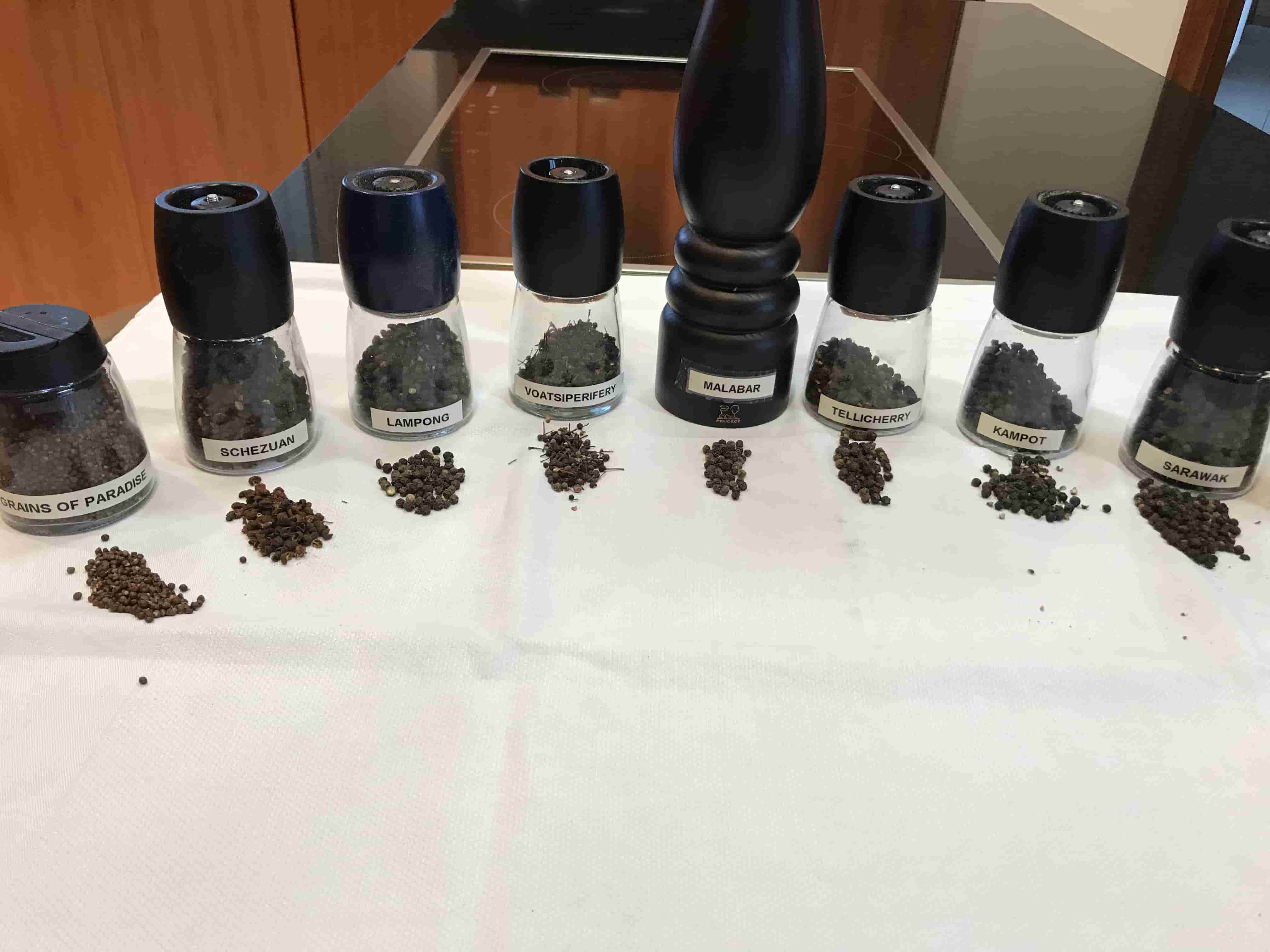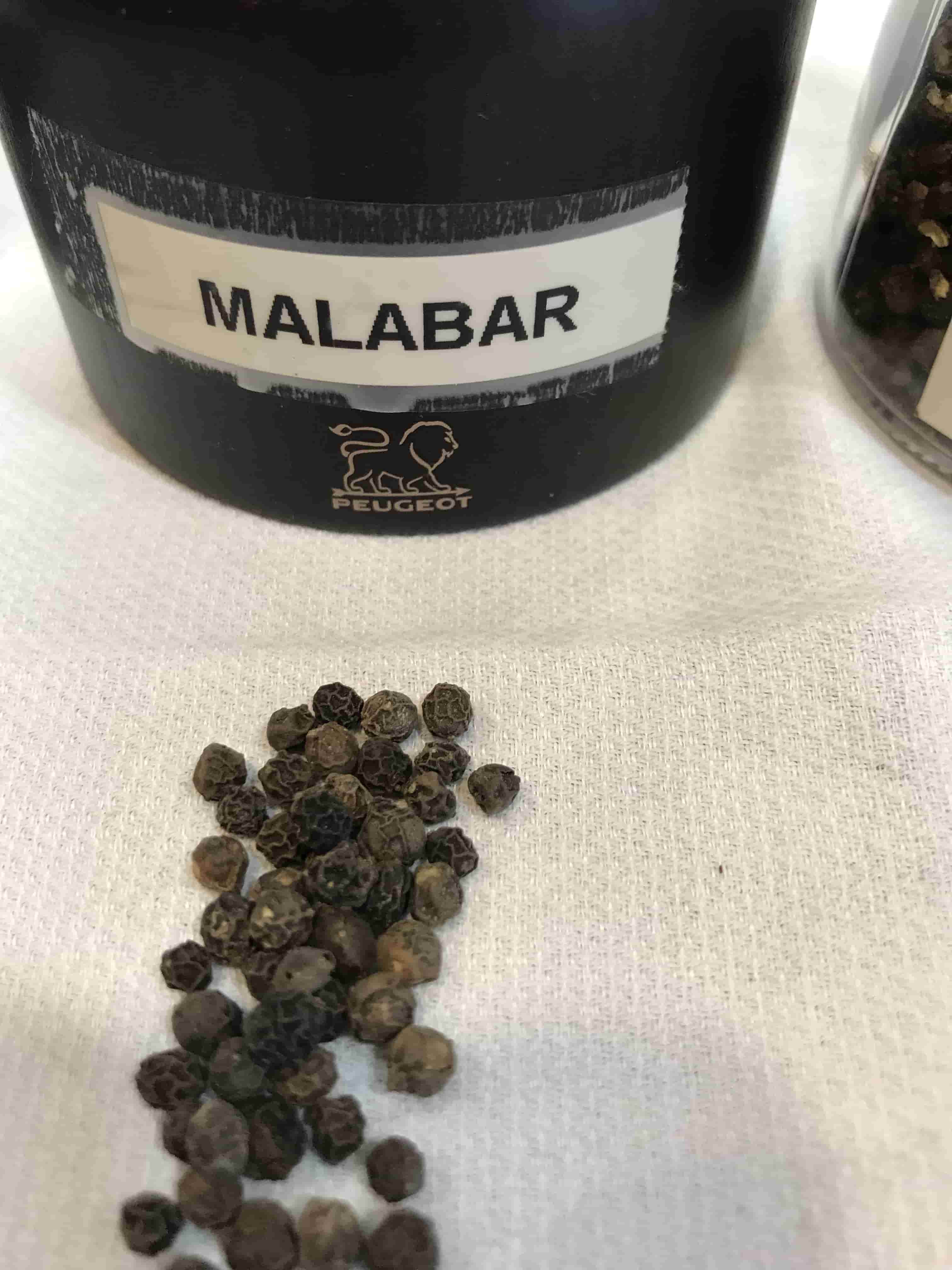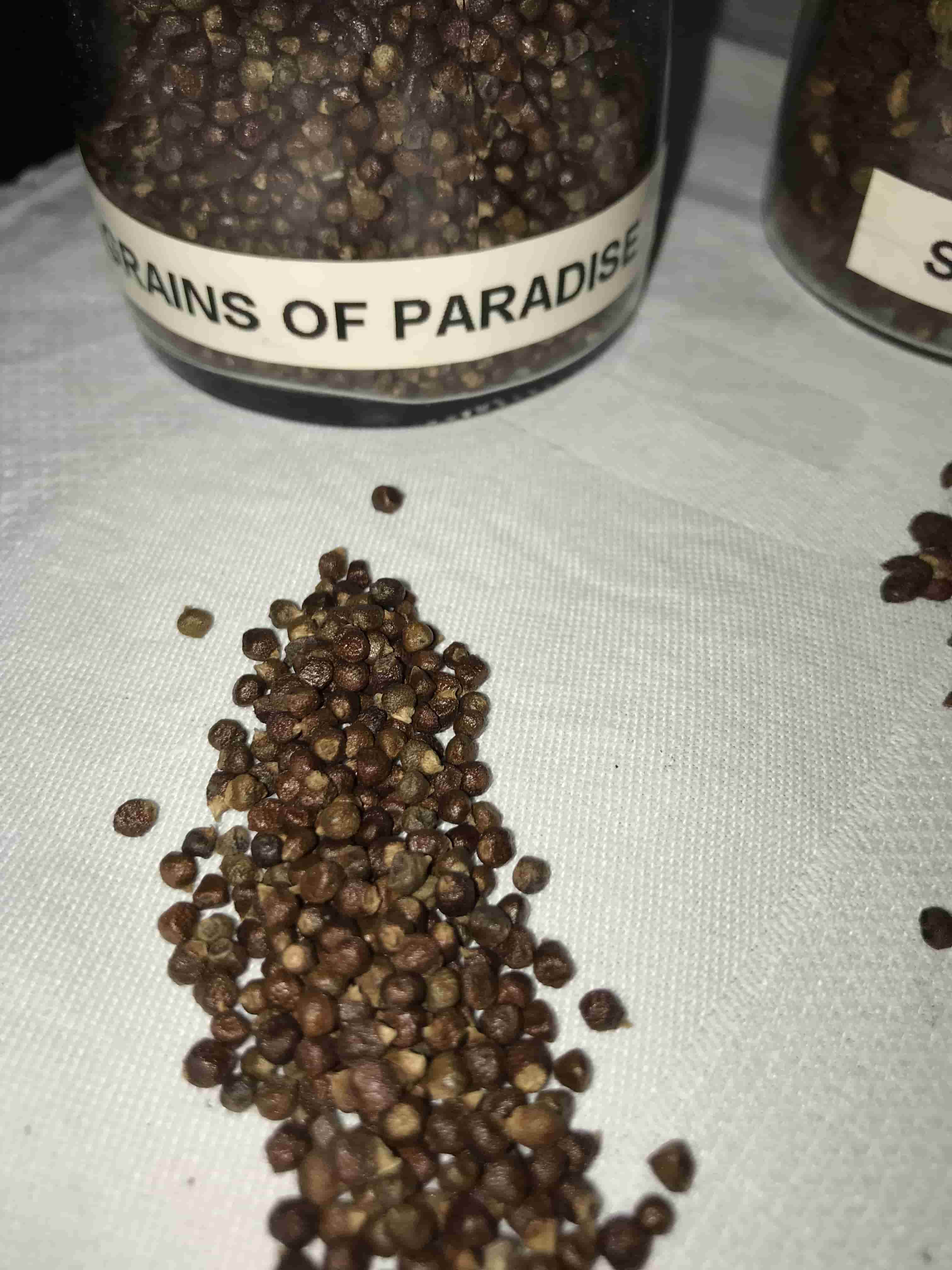Black Peppercorns
[featured-images]PEPPERCORNS

Black peppercorns are produced by picking the mature but unripe berries as they are beginning to turn from green to yellow. They are then boiled briefly and then allowed to ferment and dry naturally in the sun (or by forced-air heating) until wrinkled and black. Black Pepper is moderately hot, pungent and aromatic.

1. Tellicherry: Comes from the same region as Malabar and is a family of quality designations representing the largest and highest quality berries and is widely recognized as a premium product with more name recognition than any other variety. These berries are picked much closer to fully ripe than the Malabar, as the berry colour reaches yellow-orange or even red. The colour is a dark chocolate brown to black and the flavour is highly complex and aromatic. Tellicherry peppercorns are large in size and have a complex spicy aroma and slightly more heat with hints of cedar, flowers and cherries. The complexity in aroma and flavour comes at the expense of pungency, which is why some tastes prefer Malabar. There are several grades of Tellicherry and they vary in price and flavour.
• Nose: Swedish sauna, big eucalyptus flavours. Grapefruit zest bitterness.
• Palate: Big, rounded flavours – with similar intensity in the mouth as on the nose and a long, lingering finish.
• Recipe ideas: Like Malabar peppercorns, Tellicherry is a versatile pepper, great for cooking with and for using as a finishing flavour. Use to season everything from red meat to Malabar chicken curry. We even used it to flavour our Burn’s Night haggis.

2. Malabar: is the “original” pepper and is a popular variety that originates from the Malabar Coast in the SW portion of India, where peppercorn cultivation first began. The berries have a slightly greenish hue. This is an excellent pepper with pungent aroma and robust flavour available at a modest price. This variety represents for many what “pepper” should smell and taste like.
• Nose: Light and zesty, with medium strength.
• Palate: Cold heat, which can be felt on the lips. Citric fruit and woody notes.
• Recipe ideas: Like Tellicherry pepper, Malabar is a versatile pepper variety – great for cooking with and for a finishing flavour. Use to season everything from red meat to Malabar chicken curry.

3. White Sarawak Pepper: Before they’re “retted”, white peppercorns look just like black peppercorns. But the process of soaking the peppercorns in fresh water for a week (“retting”) loosens the outer black casing, known as the pericarp. Once loosened, the black husks simply fall away, revealing the white core of the peppercorn.
• Nose: Musk-like, gently liquorice aromas.
• Palate: Medium-strength, with lemon notes, and a light, tongue-tingling presence in the mouth.
• Recipe ideas: Unusually, this pepper is an excellent accompaniment to fish, thanks to the absence of the intense flavours found in the peppercorn husk. It’s also great with spicy beef strips and noodles, and a traditional ‘black and white pepper’ meat rub. Julia Child always insisted that white pepper should be used in a traditional French béchamel sauce, so you don’t have unsightly black flecks.

4. Black Sarawak: One pool of thought suggests that European settlers introduced black pepper to Malaysia in the seventeenth century. Another is that it was brought over by Chinese trader Zheng He, two hundred years earlier. Either way, the Malaysian climate is perfect for pepper cultivation – particularly the state of Sarawak, in mountainous Borneo, where 95% of Malaysia’s world-famous peppercorns are produced.
In recent years the Malaysian Pepper Board has encouraged growers and processors to experiment with techniques such as rapid harvesting and collection and forced air drying, aimed at increasing product quality rather than reducing costs, and these efforts are paying off. Premium Sarawak Black pepper is a medium-sized pepper with brown-greyish hues. It has a mild flavour with a fresh aroma that is often described as fruity with hints of chocolate, liquorice and Syrah.
• Nose: Big and rounded. Wet wood notes, with noticeable citrus fruit aromas.
• Palate: Much milder in the mouth than on the nose. Old spice flavours, with a balanced woodiness.
• Recipe ideas: Great finishing flavours for grilled meat. The big nose also makes this a strong enough pepper to hold its own in heavily-spiced dishes, like a curry or tagine.

5. Kampot Pepper: Pepper has been grown between the Dâmrei Mountains and Cambodian coastline since the 13th century. But Cambodia’s civil war and military insurgency had a devastating influence on the country’s pepper production. Now the industry is back up on its feet, the area has become famed for its pepper once again – and is widely considered to be the best in the world.
• Nose: Green and fresh aromas with a hint of lime blossom.
• Palate: Delicate and light flavours, with a cold-spiciness which can be felt in the mouth.
• Recipe ideas: This is the traditional pepper used for Kampot Crab. The lime blossom notes work particularly well with seafood or beef cooked with lime – the perfect antidote to a heavy black pepper.
6. Long Pepper: This distinctive-looking pepper has a similar shape and size to a catkin. It can be broken down quite easily in a grinder, cracked in a pestle and mortar – or added whole to sauces and syrups to infuse its strong flavour.
• Nose: Dry and dusty wood notes, with old spice aromas.
• Palate: Camphoraceous, eucalyptus notes, with mouth flavours as big and strong as the nose.
• Recipe ideas: This is no delicate seasoning, but it can be mellowed – either by cooking in a stew, tagine or curry – or simply by toasting in a dry pan before grinding. It’s often the pepper of choice in sweet recipes, for poaching pears or even making ‘long pepper cream’.
7. Cubeb Pepper: Cubeb was traded by Arab merchants as far back as the 7th century, though most cubeb pepper is now grown on tropical vines in Indonesia – near Java and Sumatra. It’s a big, bold pepper with a very different nose to palate – so don’t be fooled by the sweet smells. This is one to cook with, rather than to sprinkle generously as a finishing flavour.
• Nose: All-spice, nutmeg notes. Reminiscent of sweet ginger biscuits.
• Palate: Big, heady eucalyptus flavours. A cold spiciness, and long finish.
• Recipe ideas: The bitterness cuts through rich and fatty flavours. Perfect for a lamb tagine or pork belly, and an interesting seasoning for game.

8. Voatsiperifery Pepper: This rare pepper is grown in the hot and humid Madagascan rainforest on vines which can reach 20m, making picking very difficult! It’s worth the effort though – this is one of our favourites at Sous Chef.
• Nose: Strong nose. Resinous aromas, and pine forest notes.
• Palate: Medium heat, with light, lemon zest flavours.
• Recipe ideas: The lemon zest flavours really lift a dish, making this a versatile pepper, perfect for anything from roast chicken to beef, and even sweets like chocolate truffles or poached fruit.

9. Grains of Paradise: Visually and texturally this spice is different to the other peppers. It doesn’t grind as easily, meaning that a bit of elbow grease is involved – and even then, it’s still coarser. The grains of paradise are also a white-lilac-grey colour, different to the other peppers’ uniform brown colours. Grains of Paradise’s popularity peaked in Medieval France, but it’s experiencing something of a comeback. Though once used as a cheap substitute, its rareness has now made grains of paradise more of an haute choice than the common piper nigrum – and it has also enjoyed fame as one of the botanicals in Bombay Sapphire gin.
• Nose: Light, coconut notes. Clean and delicate nose.
• Palate: Coconut, cardamom flavours in the mouth too. Distinctive, blossom sweetness. A complex pepper.
• Recipe ideas: Use as a dry meat rub. It makes a particularly interesting crust for tuna steak, when other black peppers might overwhelm. Also use to flavour home-infused gins.
10. Lampong: comes from the island of Sumatra in Indonesia and is similar in some respects to Sarawak except for being hotter. This is the variety most often sold in the UK. Lampong peppercorns have an earthy and smoky aroma. This peppercorn is slightly smaller in average size than others, and it grinds extremely well in almost any mill.
11. Vietnamese: Some of the world’s best spices are coming from Vietnam these days and their pepper is no exception. This pepper is often compared to Lampong, but I find the berries to be much larger and with a pleasant lemony/citrus aroma and taste that is different from Lampong. This variety is very versatile and worth trying. We are one of the few retailers to offer it as a distinct variety.

12. Szechuan peppercorn: Also spelled Sichuan, is a fragrant but mouth-numbing spice. The aroma of Szechuan peppercorn has been likened to lavender. However, its main claim to fame is the powerful numbing sensation it causes around the mouth. When married with chili peppers (the other key ingredient in Szechuan cuisine), chefs believe this numbing effect reduces the chili pepper’s heat, leaving diners free to appreciate the chili’s intense, fruity flavour. The Szechuan peppercorn by itself does not have more spicy hotness than black peppercorns, but the mouth tingle acts to enhance tastes.




